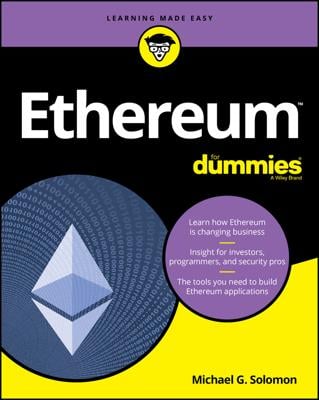Blockchains are composed of three core parts:
- Block: A list of transactions recorded into a ledger over a given period. The size, period, and triggering event for blocks is different for every blockchain.
Not all blockchains are recording and securing a record of the movement of their cryptocurrency as their primary objective. But all blockchain do record the movement of their cryptocurrency or token. Think of the transaction as simply being the recording of data. Assigning a value to it (such as happens in a financial transaction) is used to interpret what that data means.
- Chain: A hash that links one block to another, mathematically "chaining" them together. This is one of the most difficult concepts in blockchain to comprehend. It's also the magic that glues blockchains together and allows them to create mathematical trust.
The hash in blockchain is created from the data that was in the previous block. The hash is a fingerprint of this data and locks blocks in order and time.
Although blockchains are a relatively new innovation, hashing is not. Hashing was invented over 30 years ago. This old innovation is being used because it creates a one-way function that cannot be decrypted. A hashing function creates a mathematical algorithm that maps data of any size to a bit string of a fixed size. A bit string is usually 32 characters long, which then represents the data that was hashed. The Secure Hash Algorithm (SHA) is one of some cryptographic hash functions used in blockchains. SHA-256 is a common algorithm that generates an almost-unique, fixed-size 256-bit (32-byte) hash. For practical purposes, think of a hash as a digital fingerprint of data that is used to lock it in place within the blockchain.
- Network: The network is composed of "full nodes." Think of them as the computer running an algorithm that is securing the network. Each node contains a complete record of all the transactions that were ever recorded in that blockchain.
The nodes are located all over the world and can be operated by anyone. It's difficult, expensive, and time-consuming to operate a full node, so people don't do it for free. They're incentivized to operate a node because they want to earn cryptocurrency. The underlying blockchain algorithm rewards them for their service. The reward is usually a token or cryptocurrency, like Bitcoin.
The terms Bitcoin and blockchain are often used interchangeably, but they're not the same. Bitcoin has a blockchain. The Bitcoin blockchain is the underlying protocol that enables the secure transfer of Bitcoin. The term Bitcoin is the name of the cryptocurrency that powers the Bitcoin network. The blockchain is a class of software, and Bitcoin is a specific cryptocurrency.

